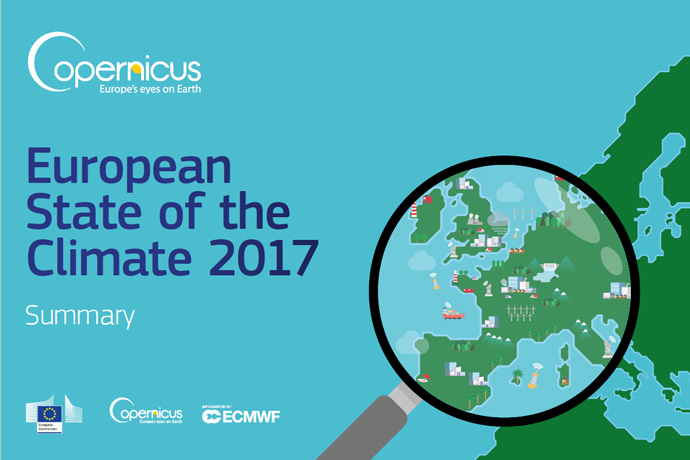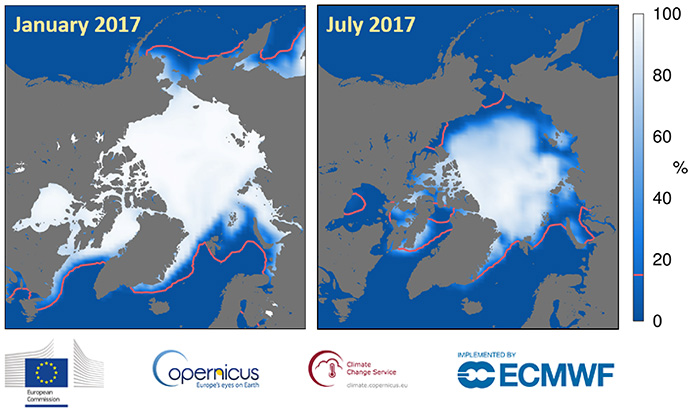

The EU-funded Copernicus Climate Change Service (C3S) and Copernicus Atmosphere Monitoring Service (CAMS), both implemented by ECMWF, have drawn up an overview of climate indicators in 2017 with a special emphasis on Europe.
Key findings include that
- during the last few months of 2017, some land areas of the North Atlantic Arctic experienced monthly temperatures more than 6°C above the 1981–2010 average
- spring was one of the warmest on record in southwestern Europe, at close to 1.7°C above the 1981–2010 average
- overall in 2017, the European average temperature was 0.8°C higher than the 1981–2010 average, making the year the fifth or sixth warmest on record, depending on the dataset considered
- in the European sector of the Arctic, sea ice cover was much lower than average during the first three months of the year, and January showed the largest negative anomaly on record.

Sea ice cover for January 2017, the month with the year’s largest anomaly in the European sector of the Arctic, and for July 2017, the month with the smallest anomaly. The pink line denotes the 1981–2010 average sea ice edge for the month. (Charts: ECMWF Copernicus Climate Change Service)
The European State of the Climate 2017 Summary also presents the long-term evolution of several key climate variables, such as temperature, greenhouse gases, sea ice, sea level and glaciers.
C3S and CAMS are presenting the document at the European Parliament on 10 April, during an event hosted by MEPs Flavio Zanonato and Klaus Buchner.
Value of Earth observation data
With CAMS already fully operational and C3S reaching the end of its pre-operational phase, ECMWF is making a substantial contribution to Europe’s flagship Earth observation programme, Copernicus.
The Copernicus services implemented by ECMWF routinely monitor data on a global scale. Satellite and in-situ data acquired by Copernicus are fed into state-of-the-art computer models to provide maps, graphs, forecasts and other outputs.
Earth observation data are key to understanding the state of our planet.
By providing free, reliable and up-to-date environmental information, the Copernicus services support the United Nations Sustainable Development Goals (SDGs).
The observational data and forecasts on greenhouse gases and surface air temperatures also contribute to the monitoring of the effectiveness of the COP21 Paris Agreement.
The Copernicus services thus provide policy-makers, industry and the public with the necessary environmental information to work for a more sustainable future.
More information
More details and the full Summary can be found on the European State of the Climate 2017 page on the C3S website.
A press release announcing the event at the European Parliament on 10 April 2018 has also been published on the C3S website.
